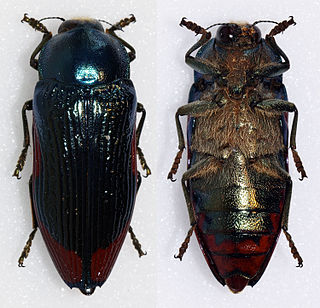
James Earl Carter Jr. is an American former politician who served as the 39th president of the United States from 1977 to 1981. A member of the Democratic Party, he previously served as the 76th governor of Georgia from 1971 to 1975 and as a Georgia state senator from 1963 to 1967. Since leaving office, Carter has remained engaged in political and social projects, receiving the Nobel Peace Prize in 2002 for his humanitarian work.
The Hoover Medal is an American engineering prize.

The Siberian elm cultivar Ulmus pumila 'Pinnato-ramosa' was raised by Georg Dieck, as Ulmus pinnato-ramosa, at the National Arboretum, Zöschen, Germany, from seed collected for him circa 1890 in the Ili valley, Turkestan by the lawyer and amateur naturalist Vladislav E. Niedzwiecki while in exile there. Litvinov (1908) treated it as a variety of Siberian elm, U. pumilavar.arborea but this taxon was ultimately rejected by Green, who sank the tree as a cultivar: "in modern terms, it does not warrant recognition at this rank but is a variant of U. pumila maintained and known only in cultivation, and therefore best treated as a cultivar". Herbarium specimens confirm that trees in cultivation in the 20th century as U. pumilaL. var. arboreaLitv. were no different from 'Pinnato-ramosa'.
The dwarf free-tailed bat is a species of bat in the family Molossidae. It is found in Cameroon, Democratic Republic of the Congo, Ivory Coast, Ethiopia, Ghana, Guinea, Kenya, Nigeria, Sierra Leone, South Sudan, and Uganda. Its natural habitats are subtropical or tropical dry forests and subtropical or tropical moist lowland forests. It is threatened by habitat loss.

Copivaleria is a monotypic moth genus of the family Noctuidae erected by Augustus Radcliffe Grote in 1883. Its only species, Copivaleria grotei, or Grote's sallow, was first described by Herbert Knowles Morrison in 1874. It is found in eastern North America, including Ontario, Tennessee, New York and Maryland.
Myxillidae is a family of marine demosponges.
Vactor Tousey Chambers was an American entomologist who specialized in Microlepidoptera. He along with James Brackenridge Clemens, was a pioneer in the study of these insects. He described many new species, with particularly many now placed in Gelechioidea.
Hamilcara is a monotypic moth genus in the family Cossidae. Its only species, Hamilcara atra, is found in North America, where it has been recorded from Arizona. The genus and species were first described by William Barnes and James Halliday McDunnough in 1910.
Colobothea ramosa is a species of beetle in the family Cerambycidae. It was described by Bates in 1872. It is known from Mexico and Nicaragua.
The elm cultivar Ulmus 'Turkestanica' was first described by Regel as U. turkestanica in Dieck, Hauptcat. Baumschul. Zöschen (1883) and in Gartenflora (1884). Regel himself stressed that "U. turkestanica was only a preliminary name given by me; I regard this as a form of U. suberosa" [:U. minor ]. Litvinov considered U. turkestanicaRegel a variety of his U. densa, adding that its fruits were "like those of U. foliaceaGilibert" [:U. minor].

Syllidae is a family of small to medium-sized polychaete worms. Syllids are distinguished from other polychaetes by the presence of a muscular region of the anterior digestive tract known as the proventricle.
Heteropia is a genus of sponges in the family, Heteropiidae, and was first described in 1886 by Henry John Carter. The type species by monotypy is Heteropia ramosa, which he first called Aphroceras ramosa in the very same publication.
Tolypella is a genus of green algae belonging to the family Characeae.
Holopsamma is a genus of sponges belonging to the family Microcionidae.
Fibulia is a genus of sponges belonging to the family Dendoricellidae. The species of this genus are found in Southern South Hemisphere.

Aristida ramosa is a species of grass that occurs in New South Wales, Victoria, Western Australia and Queensland. However, it is thought to have been introduced into Western Australia. It was first described by Robert Brown in 1810 who find it live at Port Jackson (Sydney). The species epithet, ramosa, is a Latin adjective meaning "branched" which describes the plant as bearing branches.
Ectyonopsis is a genus of demosponges in the family Myxillidae. They are mostly known from the waters surrounding Australia and from the Southern Ocean.
Ectyonopsis pluridentata, the fused branch sponge, is a species of demosponge from South Africa.

Temognatha miranda is a jewel beetle in the family Buprestidae, found in Western Australia. It was first described in 1927 by Herbert James Carter as Stigmodera miranda.





